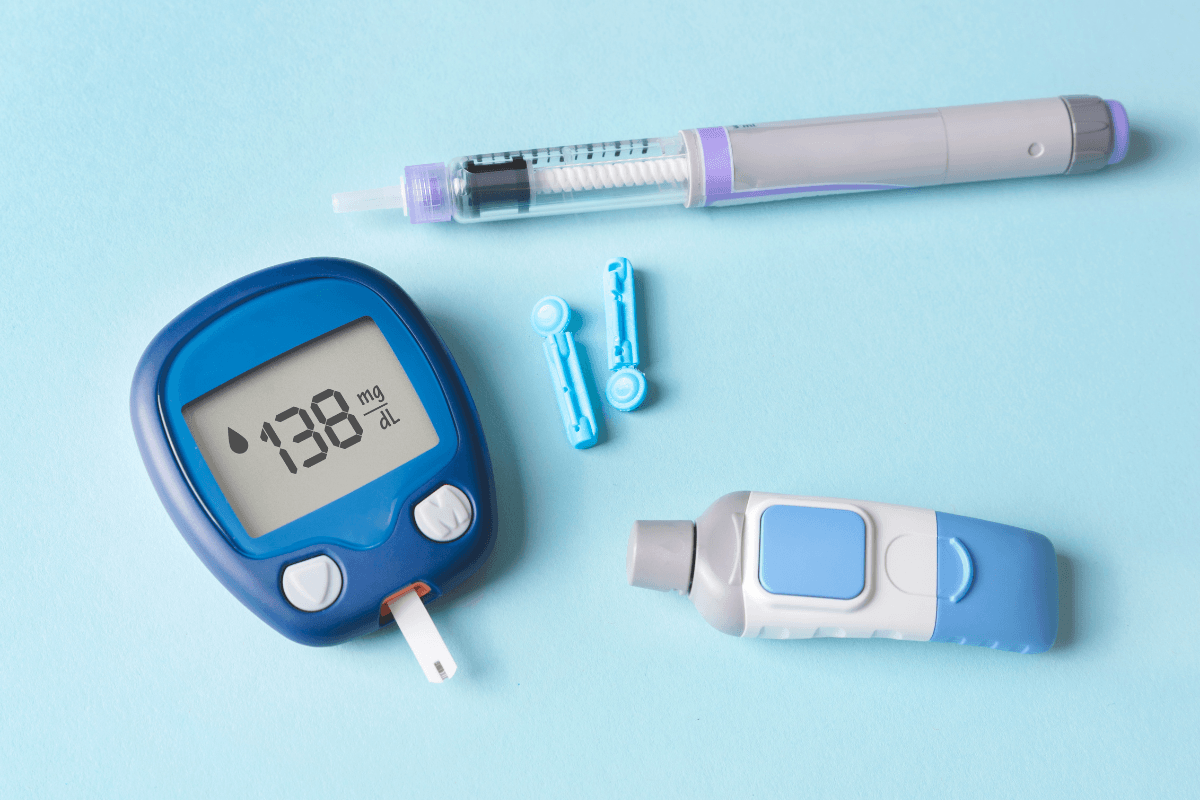Today’s tools help people track glucose, dose insulin, and reduce daily hassle. This guide explains core systems, key features, and practical setup. You will learn where pens, pumps, and sensors fit, and how they work together. We also note safety tips and coverage basics. The aim is to make diabetes tech easier to evaluate and use.
You will see plain-language terms alongside the clinical ones. We explain alerts, infusion sets, and calibration in simple steps. We also include links for deeper context and device specifics, so you can compare options responsibly.
Key Takeaways
- Core systems: pens, pumps, and real‑time sensors work together.
- Data helps pattern recognition and safer dosing decisions.
- Device choice depends on goals, comfort, and coverage.
- Supplies, site care, and calibration affect accuracy.
Understanding Diabetes Tech Today
Modern systems combine sensors, algorithms, and delivery tools. They aim to reduce manual steps and smooth glucose variability. Some products connect by Bluetooth, stream data to apps, and share trends with caregivers. Others keep things simple, focusing on reliability and cost.
In practice, pick features that address your main challenges. If nighttime lows worry you, look for predictive alerts and suspend-before-low algorithms. If mealtime spikes dominate, consider faster-acting options and bolus support. For a structured overview of meter options and selection criteria, see Glucose Monitors and Meters for a side-by-side explanation.
Continuous Glucose Monitoring Basics
Continuous sensors estimate glucose in interstitial fluid, not directly in blood. They provide trend arrows, rate‑of‑change alerts, and downloadable reports. A cgm device may reduce fingerstick checks, though confirmatory tests can still help when symptoms and readings disagree. Most systems require sensor replacement on a fixed schedule.
Accuracy depends on use. Warm‑up time, site placement, hydration, and compression can affect results. Review daily patterns, not single points, when adjusting behavior. For model‑specific safety and performance details, the FDA device resources summarize key considerations and regulatory status.
Accuracy, Calibration, and Alerts
Some sensors are factory‑calibrated, while others allow or require user calibration. Even factory‑calibrated models may drift during rapid changes like exercise or postprandial (after‑meal) spikes. When readings feel off, a single fingerstick with a high‑quality meter can clarify the situation. Use clean, dry hands and a fresh strip to avoid contamination.
Set alerts that match your lifestyle and risk tolerance. A low threshold too high can cause alarm fatigue, while one too low may miss impending hypoglycemia (low blood sugar). Periodically review reports such as time‑in‑range and glucose management indicator. For meter selection and technique tips, the article Best Blood Sugar Monitor Device explains pros and cons to support safer confirmations.
Insulin Delivery: Pens and Pumps
Pens provide consistent dosing with minimal setup. They suit people who prefer fewer components and simpler routines. Pumps deliver continuous basal insulin (background insulin) and allow programmable boluses. Advanced models pair with sensors to adjust insulin automatically, helping smooth variability.
Think about ergonomics, dosing increments, and bolus calculators when comparing options. A wearable glucose monitor can supplement pen users by guiding carbohydrate timing and activity. For background on pump algorithms and real‑world use, see Humalog Insulin Pump for a practical feature overview. If pens fit better, the primer Lantus Insulin Pen shows technique and daily workflow considerations.
Advanced Sensors and Bionic Automation
Recent platforms push toward automated insulin delivery. These systems use real‑time data, dosing rules, and safety limits to adjust basal insulin. Some add smart bolus suggestions to manage meals. The freestyle libre 3 integrates small sensors and phone connectivity, offering trend data that many find actionable.
Research continues on multi‑hormone approaches and more autonomous control. The iLet bionic pancreas concept aims to reduce manual input by automating dosing decisions. To explore adhesive options and comfort trade‑offs for patches, see Diabetes Patch for context on materials and skin care. For a broader view of digital tools around these systems, Digital Health Trends outlines connected apps and coaching.
What’s Ahead in 2025
Manufacturers are iterating sensors, infusion sets, and app algorithms. Expect smaller components, better interoperability, and clearer reports. Closed‑loop performance may improve with faster insulin and refined prediction models. Regulatory pathways also continue to shape device claims and labeling.
Product pipelines highlight incremental but meaningful refinements around alerts, durability, and wear time. You will see more integration with smartphones and health records to simplify sharing and backups. Industry summaries often frame these as new diabetes technology 2025 updates across sensors and pumps. For background on choosing insulin formulations for these systems, see Insulin Products Guide for formulation characteristics and handling.
Choosing the Right Monitor and Meter
Start with your goals. If you want fewer fingersticks, look for sensors with reliable alerts and good app support. If you prefer traditional checks, pick a meter with clear displays, reliable strips, and strong quality control. For type 2 diabetes, features that simplify meal timing and activity feedback can be especially helpful.
Match features to clinical priorities. People focused on patterns may value reports and sharing; travelers may prefer long wear time and simple charging. Many readers ask about the best glucose monitor for type 2 diabetes; the answer depends on comfort, tech readiness, and insurance. For cartridge users comparing insulins for mealtime control, the explainer Insulin Cartridges Guide covers types and workflow impacts.
Supplies, Setup, and Safety
Supplies matter as much as devices. Keep a rotation plan for sites, with notes on comfort and absorption. Stock backups for sensors, infusion sets, chargers, and test strips. Train on app updates and review alert settings after any major change. A concise checklist of diabetes equipment and supplies helps avoid gaps during travel or busy weeks.
If you use disposable pens, consider options like Tresiba FlexTouch Pens for basal routines, with a clear plan for timing. For cartridge‑based pens, Fiasp Insulin Cartridges may support faster meal dosing; confirm instructions with your care team. Syringe users may review BD Ultrafine II Syringes for technique and comfort notes. For basal alternatives and storage details, Lantus Cartridges offer another reference point for planning.
Access, Coverage, and Prescriptions
Device access varies by region, insurance, and prescriber policies. Many systems require a continuous glucose monitoring devices prescription, and some plans need prior authorization. Public payers update coverage criteria periodically. For example, Medicare coverage expanded to include more sensor users; see the CMS coverage update for an official summary of scope changes.
Professional guidelines can help frame device selection with your clinician. The ADA technology standards discuss benefits, limitations, and safety for varied patient groups. If you are exploring condition‑specific articles before an appointment, browse Type 1 Diabetes and Type 2 Diabetes categories for structured context and terminology.
Practical Comparisons and Related Topics
People juggling meals, activity, and travel can benefit from structured routines. Consider how adhesive wear and charging fit your schedule. Think through backup plans for sensor errors and pump occlusions. If you are trialing different adhesives or patch styles, the overview on Dario Blood Glucose Meter adds perspective on pairing meters with sensor workflows.
Pump users often refine basal profiles and insulin‑to‑carb ratios over time. Pen users may rely on consistent timing and meal planning. If you are evaluating both, compare steps and data needs side by side. For additional context on categories and product organization, review the Diabetes Products section to understand supplies by type and use case.
Recap
Pens and pumps deliver insulin in different ways, and sensors provide continuous feedback to guide daily choices. Together, these tools can reduce manual effort and improve safety. The best setup reflects your goals, comfort with apps, and coverage situation. A simple routine used well often beats a complex one used inconsistently.
Revisit alert thresholds, site rotation, and backup supplies as your needs change. Read manufacturer instructions and speak with your healthcare team before changing routines or device settings. When you want more depth, explore linked guides for comparisons and technique. Informed, incremental changes can make day‑to‑day management notably steadier.
Note: Always confirm device instructions, contraindications, and sensor replacement schedules in the official labeling for your model. For regulatory and safety background across devices, the FDA device resources provide current summaries.
This content is for informational purposes only and is not a substitute for professional medical advice.


